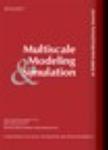版权所有:内蒙古大学图书馆 技术提供:维普资讯• 智图
内蒙古自治区呼和浩特市赛罕区大学西街235号 邮编: 010021

作者机构:Univ Edinburgh Sch Math Edinburgh Midlothian Scotland British Lib Alan Turing Inst Data Sci London England NYU Courant Inst Dept Math New York NY 10012 USA Univ Manchester Sch Math Manchester Lancs England
出 版 物:《MULTISCALE MODELING & SIMULATION》 (多尺度模型与模拟)
年 卷 期:2018年第16卷第4期
页 面:1756-1794页
核心收录:
学科分类:07[理学] 070104[理学-应用数学] 0701[理学-数学] 0702[理学-物理学]
基 金:Office of Naval Research grant ONR [N00014-15-1-2351] Office of Naval Research [MURI N00014-16-1-2161] DARPA [W91NF-15-1-0636]
主 题:data assimilation 3DVAR SPEKF Navier-Stokes equation model error stochastic parameterization
摘 要:Bayesian state estimation of a dynamical system from a stream of noisy measurements is important in many geophysical and engineering applications where high dimensionality of the state space, sparse observations, and model error pose key challenges. Here, three computationally feasible, approximate Gaussian data assimilation/filtering algorithms are considered in various regimes of turbulent 2D Navier-Stokes dynamics in the presence of model error. The first source of error arises from the necessary use of reduced models for the forward dynamics of the filters, while a particular type of representation error arises from the finite resolution of observations which mix up information about resolved and unresolved dynamics. Two stochastically parameterized filtering algorithms, referred to as cSPEKF and GCF, are compared with 3DVAR-a prototypical time-sequential algorithm known to be accurate for filtering dissipative systems for a suitably inflated background covariance. We provide the first evidence that the stochastically parameterized algorithms, which do not rely on detailed knowledge of the underlying dynamics and do not require covariance inflation, can compete with or outperform an optimally tuned 3DVAR algorithm, and they can overcome competing sources of error in a range of dynamical scenarios.